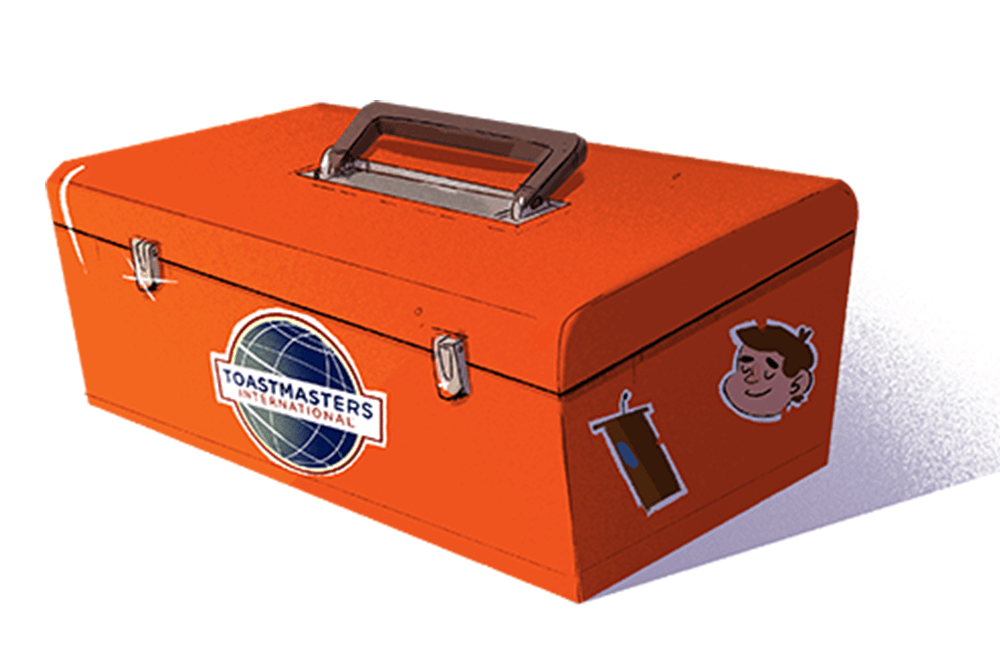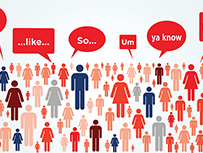
Click the play button to hear examples from the author for tips on how to use a micro-pause to improve your speech.
Vocal variety is an essential element of an effective speech. I enjoy using all the various dimensions of vocal expression, including volume, pitch and emotion. My favorite technique, however, does not involve using the voice at all. It is the pause.
I was recently coaching a contestant in the International Speech Contest. As I watched the video of his speech in the area contest, I observed that his content and vocal expressiveness were good. What he lacked, however, was effective pausing. When he corrected this, his division-level performance was much more powerful.
These tips can help you take advantage of the power of the pause. I am a big proponent of sensing the cadence of your speeches and staying consistent with it. Songs have a certain rhythm and limericks have a particular cadence as well. If you deviate from it, the listener knows something is off. Our speeches, too, have a certain natural flow. But an unvarying cadence can sometimes make all our words blend together. At times it is good to disrupt the lulled attention of our listeners, and pauses do that.
That, however, is not the only way to use this technique in a speech. For example, it is effective to pause before the punchline of a joke—it creates anticipation and curiosity. Likewise, a pause after the joke gives the listener a chance to enjoy the joke and, hopefully, laugh loud and long.
You can also employ a pause to give audience members a chance to think about something you just said. If you made what you hope is a profound statement, give them an opportunity to think, Wow, that’s a good point.
Sometimes you might ask a question. “Would you like to have deeper, more meaningful communication?” Give them a chance to answer. If the responses are a collective “yes” or “no,” your pause would be short. If your question requires a longer answer, you should wait a bit longer before you continue.
“Using a micro-pause interrupts the daydreaming of audience members and brings them back to active listening.”
In addition, you can use a pause to transition to a new topic. Your audience members, as they listen to you, are evaluating your words in the framework of your existing context. A pause tips the audience off to a possible change in the context of your presentation.
Let us now return to the participant in the International Speech Contest. The tip I gave him that increased his effectiveness was to use what I call a micro-pause. This is not the hold-it-as-long-as-you-can pause we are typically taught. The micro-pause is no longer than one second, frequently shorter.
What does this technique accomplish? First off, it calls attention to your key point. When we fall into a predictable verbal pattern, listeners can become numb to our words. Using a micro-pause interrupts their daydreaming and brings them back to active listening. Place the pause right before the key word.
A second benefit is that the micro-pause puts a subtle emphasis on the word or phrase that follows it. When our words blend together, they all seem alike and, thus, of equal importance. But when we make a point, we want our audience to get it. The micro-pause sets our key phrase apart.
The micro-pause also enables another technique: subtly changing the tone of a key word or phrase. If, in the middle of our normal delivery, we suddenly changed the pace, volume or emotional tone, it may seem out of place. With a micro-pause, we make this shift without it sounding forced. In fact, it can be quite effective. Keep in mind that this is not a major shift—it is minor, but noticeable enough that the phrase has additional impact. If we say the important word a little slower, with a little more urgency, it carries much more weight. (I have included examples in the audio recording at the top of this page.)
As you prepare your next speech, experiment with the pause, especially the micro-pause, and see what a difference it makes in your speaking.
Watch the video below by executive communication coach Karen Friedman for advice on changing the way you are heard and perceived by pausing when speaking.
Bill Brown, DTM is a speech delivery coach in Gillette, Wyoming. He is a member of Energy Capital Toastmasters in Gillette. Learn more at billbrownspeechcoach.com.
Related Articles

Presentation Skills
Um, How Do I Stop, Ya Know, Using Um and Ah?

Presentation Skills



 Previous
Previous
 Previous Article
Previous Article